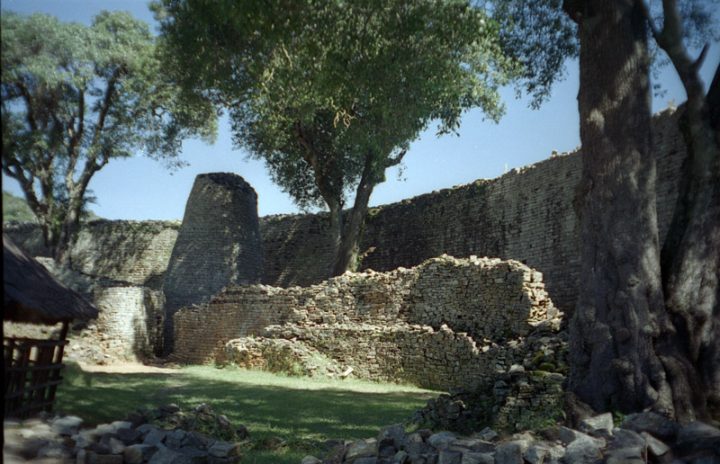About 1600 years ago the Shona, a very well-organized warrior people, descended from Sudan to southern Africa, bringing with them astronomical and spiritual knowledge as well as the practices of agriculture and metalworking (gold, iron and copper). From the scarce information we have about them, emerges one indisputable fact: the Shona were great builders.
As often happens in migratory phenomena, they divided into small groups, sharing with other people who already lived in that area, such as the Bushmen, and began to build their kingdoms together with other clans and tribes.
Southern Africa has always been a land of mysteries. According to a Babylonian legend, it seems that the materials to represent the gods Anunnaki come from there. And South Africa is indeed one of the richest lands in raw materials. Another mystery concerns the presence of gigantic stone constructions, such as those of Mpumalanga and Mapungubwe. Several archaeologists, including the Senegalese Louise Marie Diop, are convinced that these are the remains of a civilization prior to the Shona’s arrival.
They built castles and fortifications, called “dzimba dzemabwe” in their language (pictured), i.e. stone houses 10 meters high, with a connection that would have been deliberately created with the three central stars of the constellation of Orion, equal to that of the three pyramids of Giza, in Egypt. From what we know they had an animist type of religion with belief in a creator god, Mwari, and in the harmony between man and nature.
After some centuries, the successors of the Shona founded another civilization, that of the Mwene mutapa, or Monomotapa, according to the Portuguese pronunciation. The empire, made up of various kingdoms rich in copper, iron, ivory and gold, included the current day territories of Zambia, Mozambique and Zimbabwe and reached its height between the 13th and 14th centuries. Towards the end of the fourteenth century the river Zabi that crossed the region dried up, causing a serious famine. Therefore the Bantu peoples from the Great Lakes region took over. The buildings were strikingly beautiful, especially on the island of Kilwa and Manikeni, the houses were made of coral and the royal palace had four main entrances. The empire depended on agriculture and trade with China -archaeologists found large quantities of Chinese porcelain in the royal palace – and with India and the Arabs.
In fact we must not forget that the Arabs wrote a lot about pre-colonial Africa, by drawing maps, describing the rich cities of the empire with admiration and telling their adventures as explorers. Part of the population converted to Islam, but the ruler and the court remained connected to the religion of their ancestors, with matriarchal organization in which the most influential person was the queen mother (Namwari). Then there were the priests (Chengere Mwari), the farmers (Limpo) and the officials (Mashona). There was no writing, but the jewels, fabrics, oral traditions and Arabic writings have helped us get to know this great African civilization.
The decline of Mwene mutapa was caused by power struggles between families and governors as well as the arrival of the Portuguese and the Dutch. In 1529 the Portuguese conquered the greater part of the empire, even if some of the inhabitants fled to present-day Mozambique.
In 1871 the German archaeologist Karl Maor ventured into the forest of what would later be called Rhodesia, saw the ruins of an ancient castle and attributed it to the Phoenicians; for the thinking of the time it was impossible for Africans to have built such imposing structures. The British Empire and the Rhodesian segregationist regime long prohibited access to the site to African archaeologists, and many sacred objects were sent to museums in London. Yet in the end modern science has confirmed that the buildings are actually the work of Africans.
The current name of the country – Zimbabwe – was only adopted in 1980 as homage to the ancient stone constructions called “dzimba dzemabwe”.
Translation from Italian by Liane Arter






